Discover 5 hidden attractions, cool sights, and unusual things to do in Boundary Waters Canoe Area Wilderness (United States). Don't miss out on these must-see attractions: Eagle Mountain, Whale Lake, and Sawbill Lake. Also, be sure to include Misquah Hills in your itinerary.
Below, you can find the list of the most amazing places you should visit in Boundary Waters Canoe Area Wilderness (Minnesota).
Table of Contents
Eagle Mountain
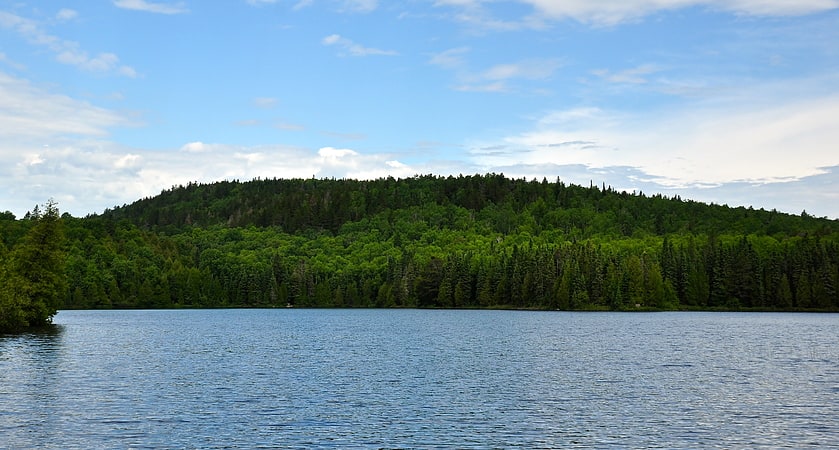
Hill in Minnesota. Eagle Mountain is the highest natural point in Minnesota, United States, at 2,301 feet. It is in northern Cook County, it is in the Boundary Waters Canoe Area Wilderness and Superior National Forest in the Misquah Hills, northwest of Grand Marais. It is a Minnesota State Historic Site.
Eagle Mountain is only about 15 miles (24 km) from Minnesota's lowest elevation, Lake Superior, at 600 feet (183 m). It is part of the Canadian Shield. Confusingly, there is another much shorter peak also named Eagle Mountain in northern Minnesota. The shorter peak is part of the Lutsen Mountains ski resort.
The hike to the summit can be made in about two and a half hours. The distance to the peak is about 3.5 miles (5.6 km) with an elevation gain of 550 feet (168 m). The trail is rocky and moderately strenuous. Whale Lake is about halfway along the trail and offers two campsites to hikers. The peak of the mountain is marked with a plaque.
Permits are required because portions of this hike enter the Boundary Waters Canoe Area Wilderness. Self-issued permits are available at any Superior National Forest ranger station or at the trailhead. Instructions and the permit can usually be found at the trailhead kiosk.
Among the highest natural points (highpoints) in each U.S. state, Eagle Mountain ranks 37th.[1]
Whale Lake
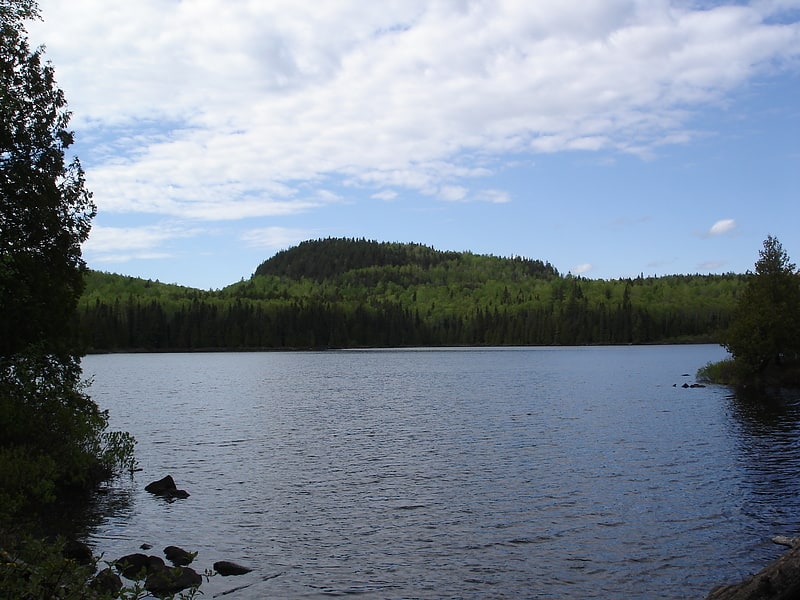
Lake in Minnesota. Whale Lake is a lake in Cook County in what is known as the Arrowhead Region of northern Minnesota. It is within the Boundary Waters Canoe Area Wilderness of the Superior National Forest, at the base of Eagle Mountain, Minnesota's highest point. Two miles from the nearest road, Whale Lake is only accessible via the Eagle Mountain Hiking Trail from the south, or the Brule Lake Trail from the northwest. It offers two campsites to hikers, one on the northern shore near the intersection of the two trails, and the other a few hundred yards away from the western shore.
Whale Lake has been known to contain Bluegill, Northern Pike, Yellow Perch, and more commonly, White Sucker fish.[2]
Sawbill Lake
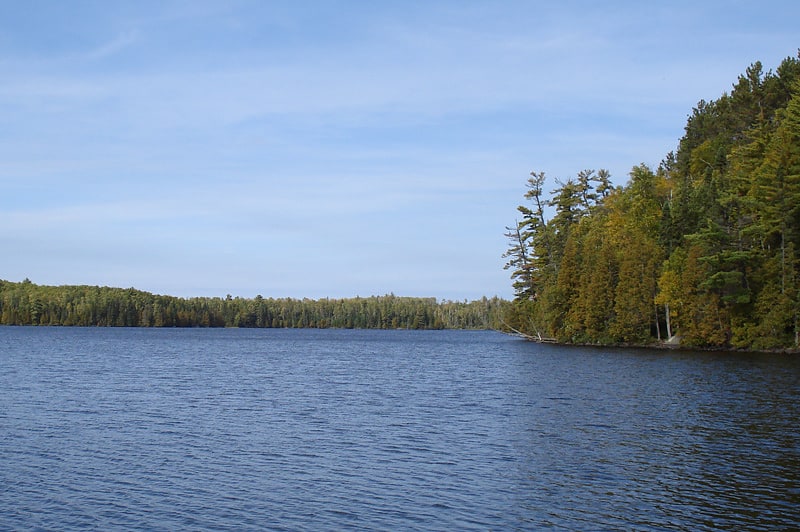
Lake in Minnesota. Sawbill Lake is a lake in Cook County, Minnesota. The closest town to Sawbill Lake is Tofte. It is a popular entry point to the Boundary Waters Canoe Area Wilderness in the Superior National Forest. Sawbill is a nickname of the common merganser duck. There is a United States Forest Service cabin, a canoe outfitter, and a campground located at the southern end of the lake. During the Great Depression there was a Civilian Conservation Corps camp six miles south of the lake.
Sawbill has portages connecting it to Smoke Lake, Kelso Lake, Ada Creek and Alton Lake.[3]
Misquah Hills
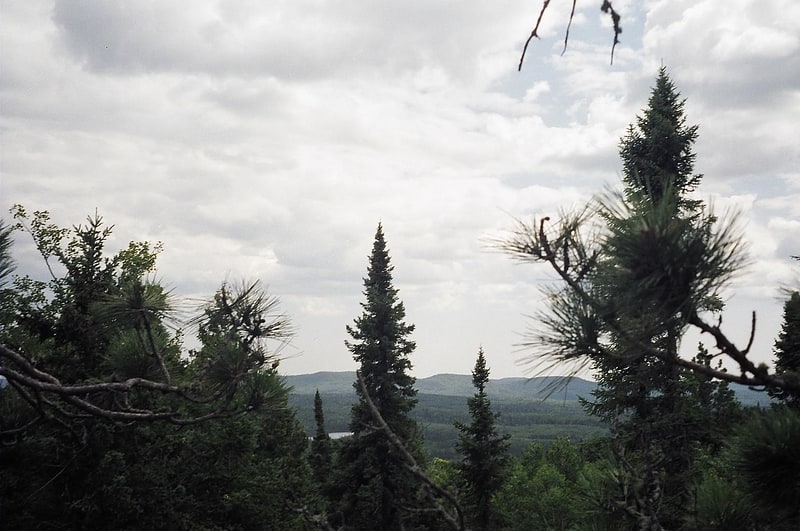
Range in Minnesota. The Misquah Hills are a range of mountains in northeastern Minnesota, in the United States. They are located in or near the Boundary Waters Canoe Area Wilderness within Superior National Forest. Eagle Mountain, the highest point in Minnesota at 2,301 feet, is considered to be part of the Misquah Hills.[4]
Little Cannon River
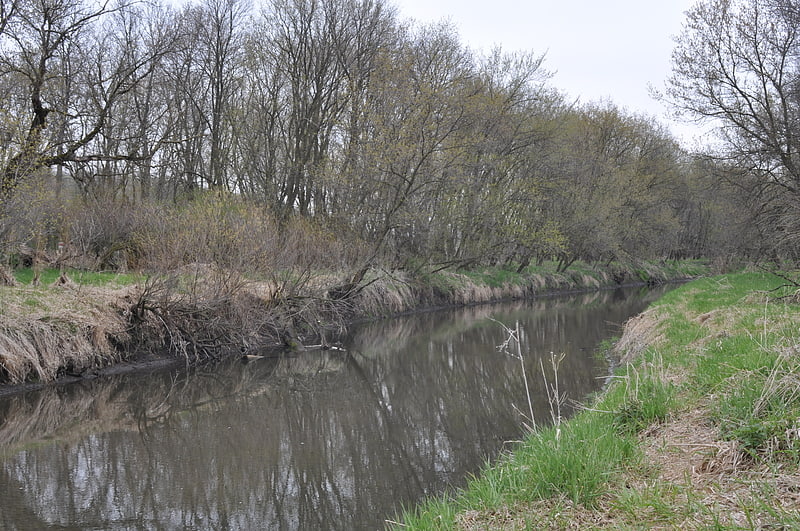
River in Minnesota. The Little Cannon River is a 30.6-mile-long river of Minnesota in the United States. It flows into the Cannon River at the city of Cannon Falls. A section of the Little Cannon River south of Sogn, Minnesota is a designated trout stream by the Minnesota Department of Natural Resources.[5]